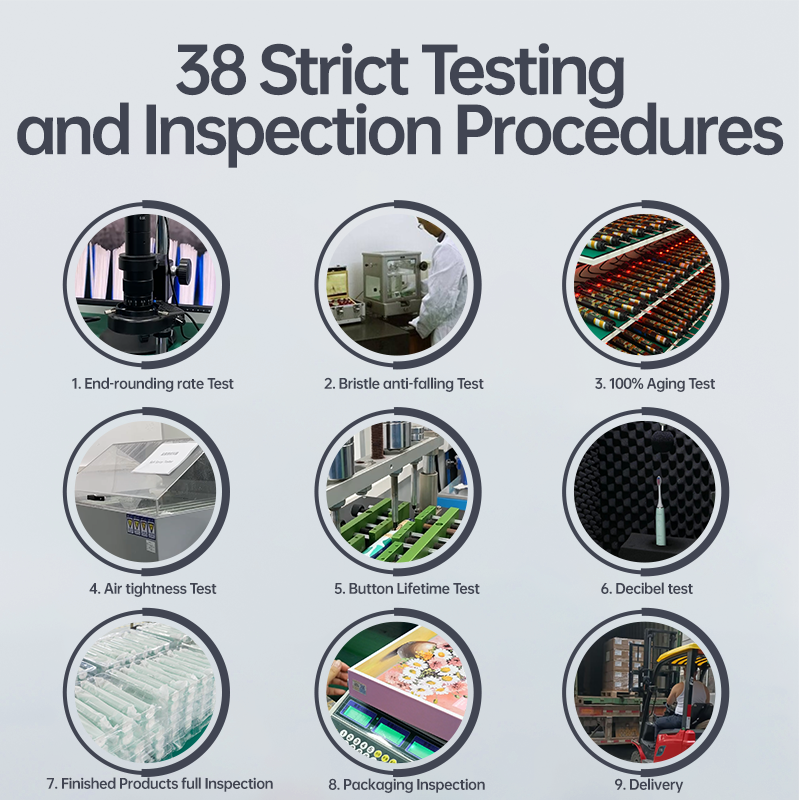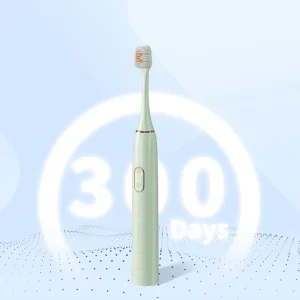Ensuring high-quality electric toothbrushes is crucial for both manufacturers and consumers. A well-manufactured toothbrush not only enhances the user experience but also plays a vital role in maintaining oral health. For an ISO-certified manufacturer, adhering to strict electric toothbrush quality control processes is essential to meet global safety and performance standards.
This blog will explore the manufacturer quality control process and highlight five essential testing standards that every oral care quality control program should follow.
Material Safety and Compliance Testing
The first step in quality control is ensuring that all materials used in electric toothbrush production are safe, non-toxic, and compliant with international regulations. Key factors include:
BPA-Free and FDA-Approved Materials: The plastic components, bristles, and rubber elements must be free from harmful substances.
RoHS and REACH Compliance: Ensuring that the product is free from hazardous substances like lead, mercury, and cadmium.
ISO 10993 Biocompatibility Testing: This standard ensures that materials in contact with the human body do not cause irritation or allergic reactions.
Mechanical Durability and Life Cycle Testing
A high-quality electric toothbrush should withstand long-term use without mechanical failure. Manufacturer quality control processes should include:
Motor Performance Testing: Verifying that the brush maintains consistent power and vibration levels over its lifespan.
Drop & Impact Resistance Tests: Simulating accidental drops to ensure the toothbrush remains functional.
Waterproof Testing (IPX Rating): Ensuring that the toothbrush can withstand exposure to water, with IPX7 or higher being the industry standard.
These tests help prevent defects that could affect product performance and customer satisfaction.
Battery Performance and Safety Testing
Battery reliability is critical for electric toothbrushes, as poor-quality batteries can lead to overheating or reduced efficiency. A comprehensive electric toothbrush quality control program should include:
Battery Life Cycle Testing: Measuring how many charge cycles the battery can withstand before degradation.
Overcharging and Short-Circuit Testing: Ensuring safety mechanisms prevent battery malfunctions.
Compliance with IEC 62133 and UN38.3: These certifications are essential for lithium-ion battery safety and international shipping compliance.
By implementing these standards, manufacturers can ensure their products meet both performance and safety expectations.
Vibration Frequency and Noise Level Testing
A well-designed electric toothbrush must provide effective cleaning while maintaining a comfortable user experience. Oral care quality control should assess:
Motor Frequency Consistency: Ensuring that the brush delivers the correct number of oscillations or sonic vibrations per minute.
Noise Level Testing: Measuring decibel levels to keep noise within acceptable limits (usually below 60 dB).
Brush Head Compatibility Testing: Verifying that brush heads fit securely and do not affect vibration efficiency.
Proper testing helps maintain an optimal balance between power, comfort, and usability.
Sterilization and Hygiene Testing
Since electric toothbrushes are used daily in the mouth, hygiene and sterilization are critical factors in electric toothbrush quality control. Manufacturers should follow:
Bacterial Contamination Testing: Ensuring that the toothbrush remains free from harmful bacteria before packaging.
UV Sterilization for High-End Models: Some toothbrushes include built-in UV sanitizers that require testing for effectiveness.
Sealed Packaging Integrity Testing: Ensuring that toothbrushes are securely packaged to prevent contamination before reaching consumers.
By implementing strict hygiene measures, manufacturers can enhance consumer trust and product reliability.

Ensuring Top-Quality Electric Toothbrushes Through Rigorous Testing
For an ISO-certified manufacturer, maintaining strict manufacturer quality control processes is key to delivering safe, effective, and durable electric toothbrushes. By implementing these five essential testing standards—Material Safety, Mechanical Durability, Battery Performance, Vibration Frequency, and Hygiene Testing—manufacturers can meet industry regulations while ensuring customer satisfaction.
With a robust oral care quality control system in place, manufacturers can produce electric toothbrushes that not only comply with safety standards but also provide an outstanding user experience.
Would you like to learn more about how to implement these quality control processes in your production line? Contact us today for expert solutions!https://www.powsmart.com/about-powsmart/


